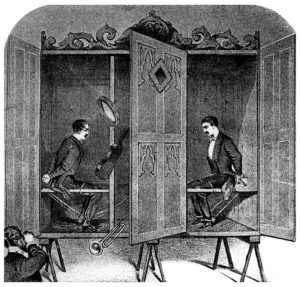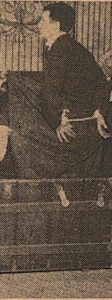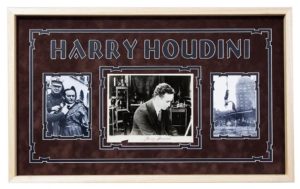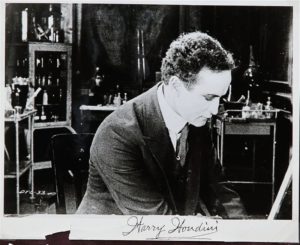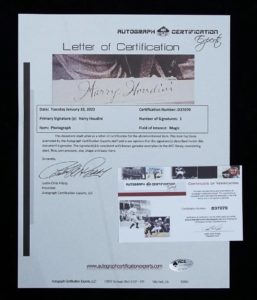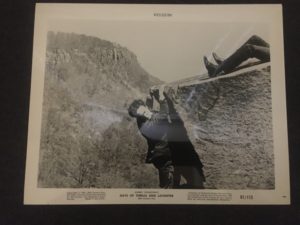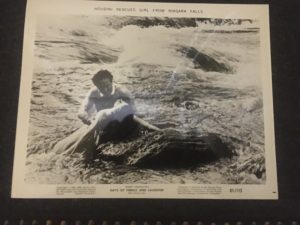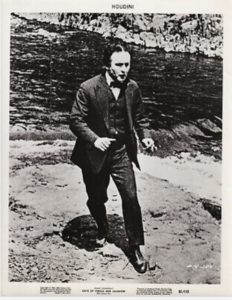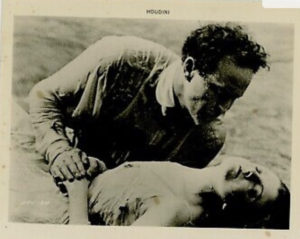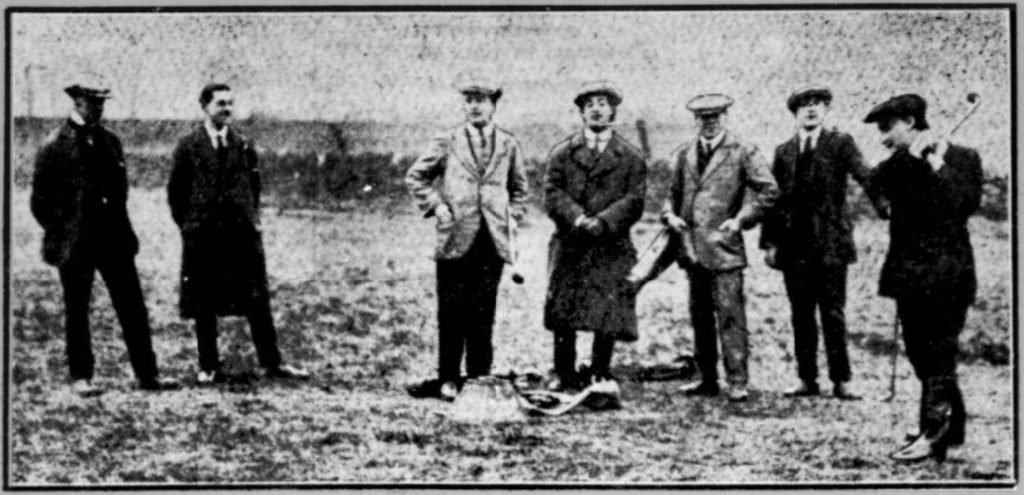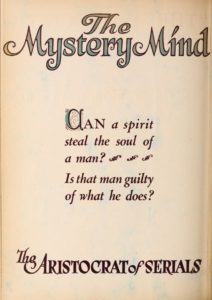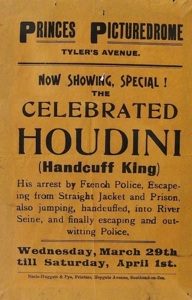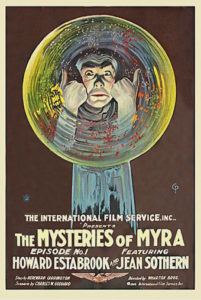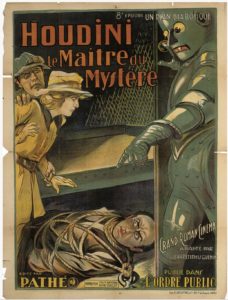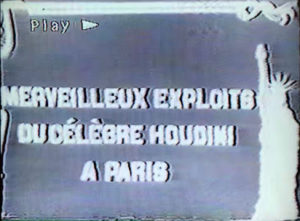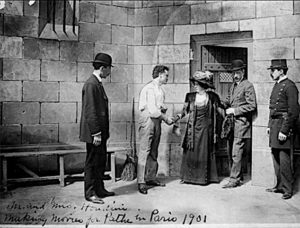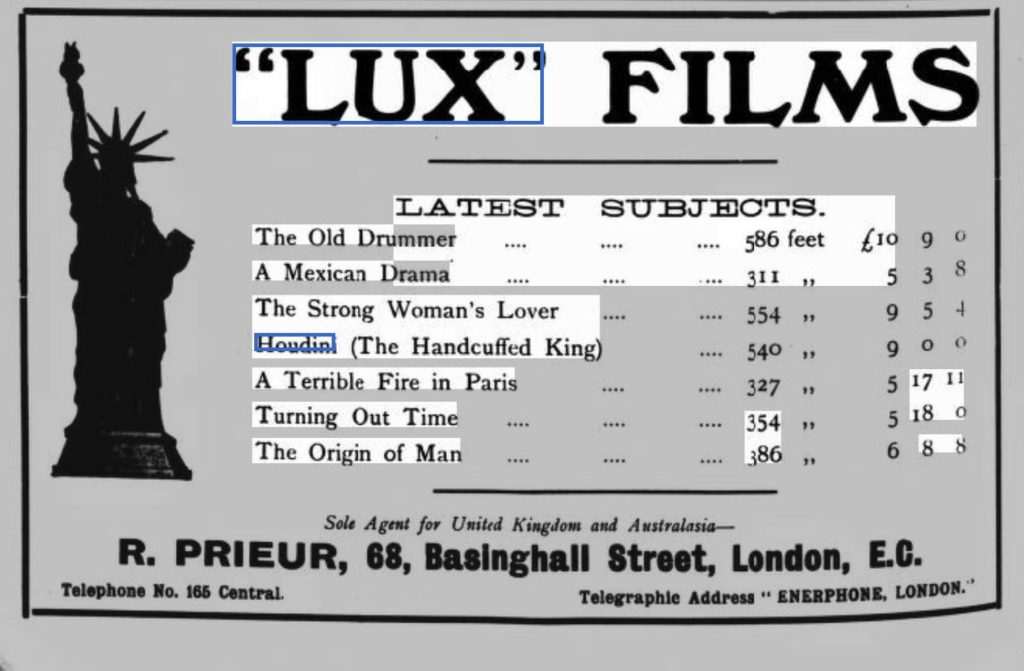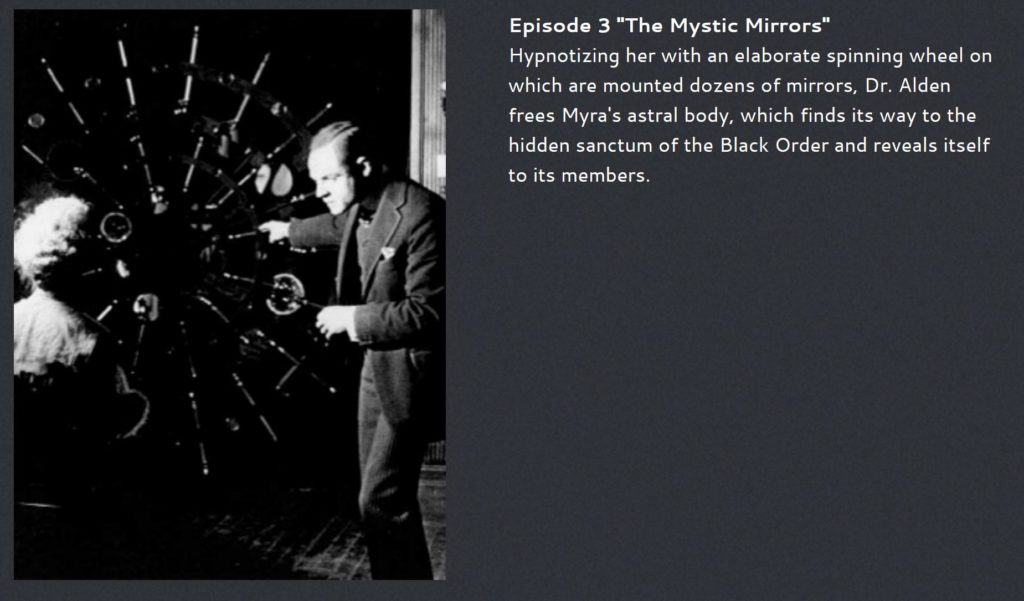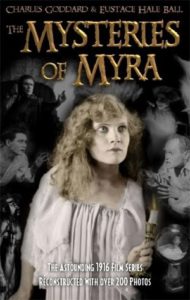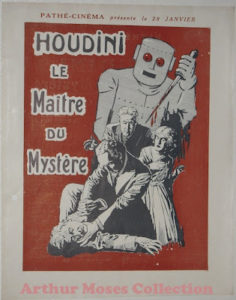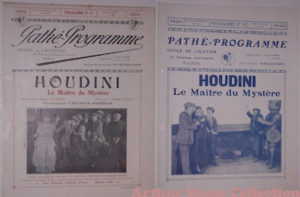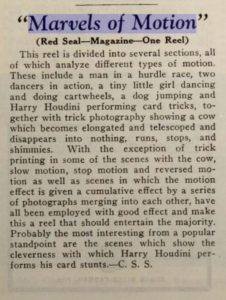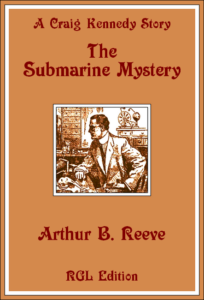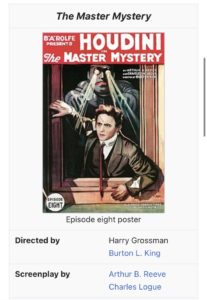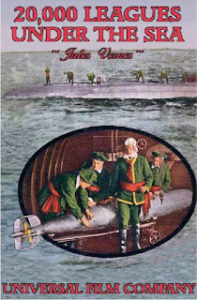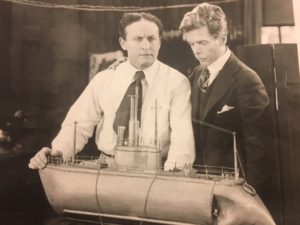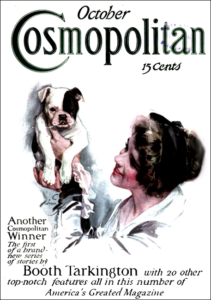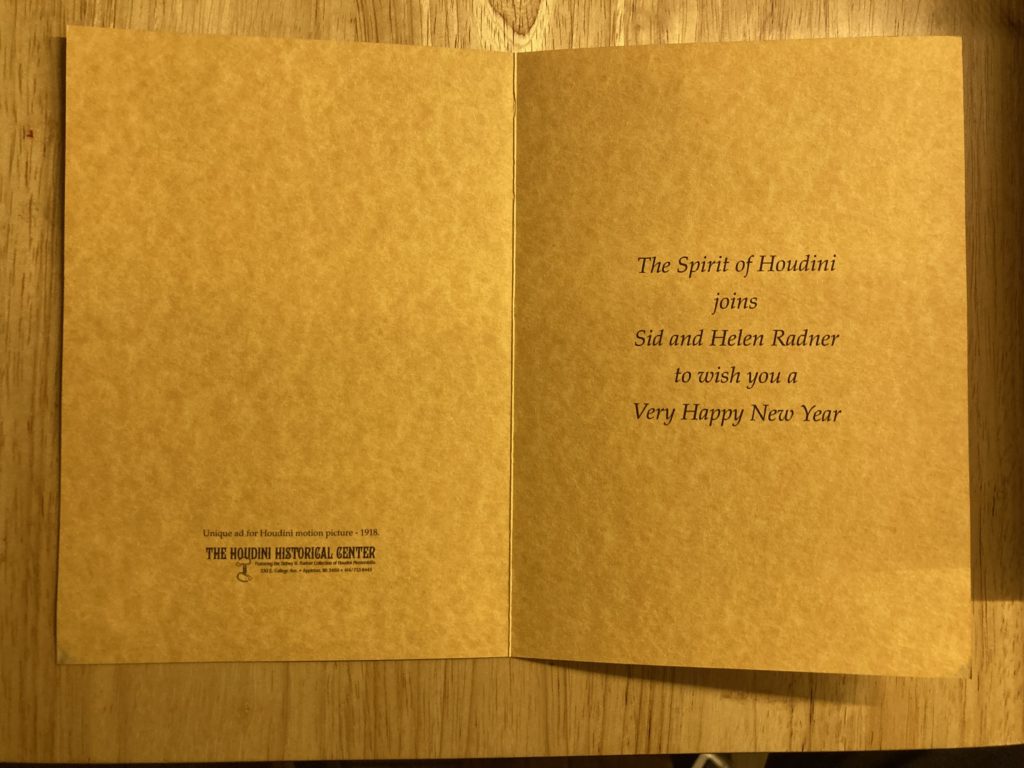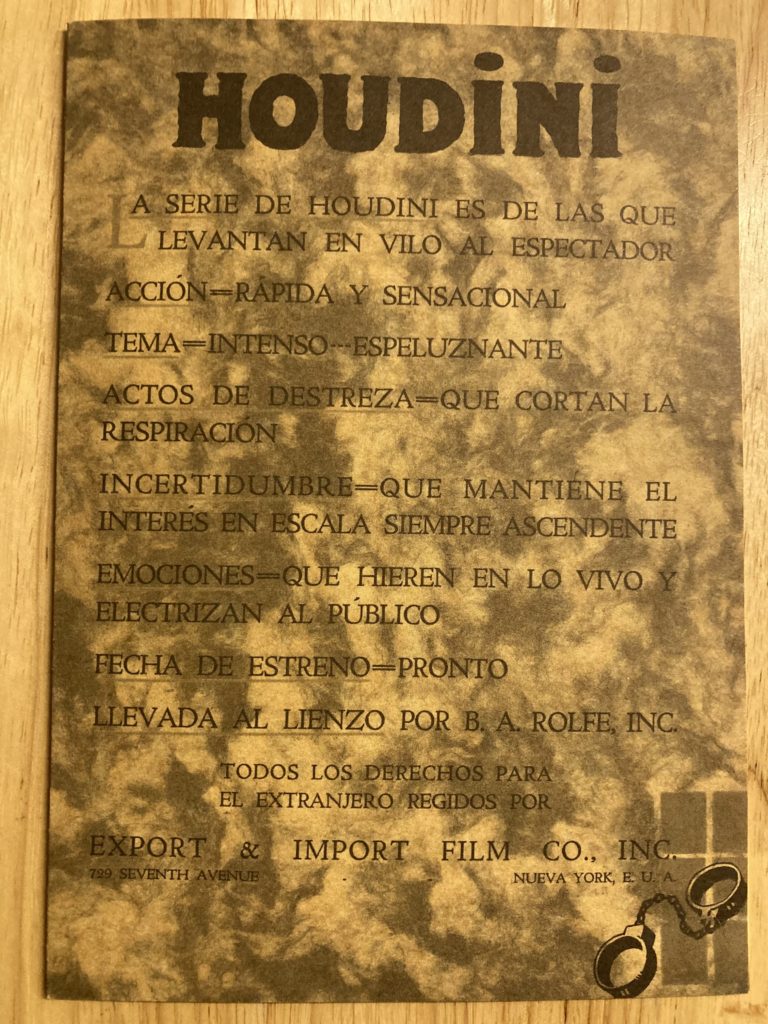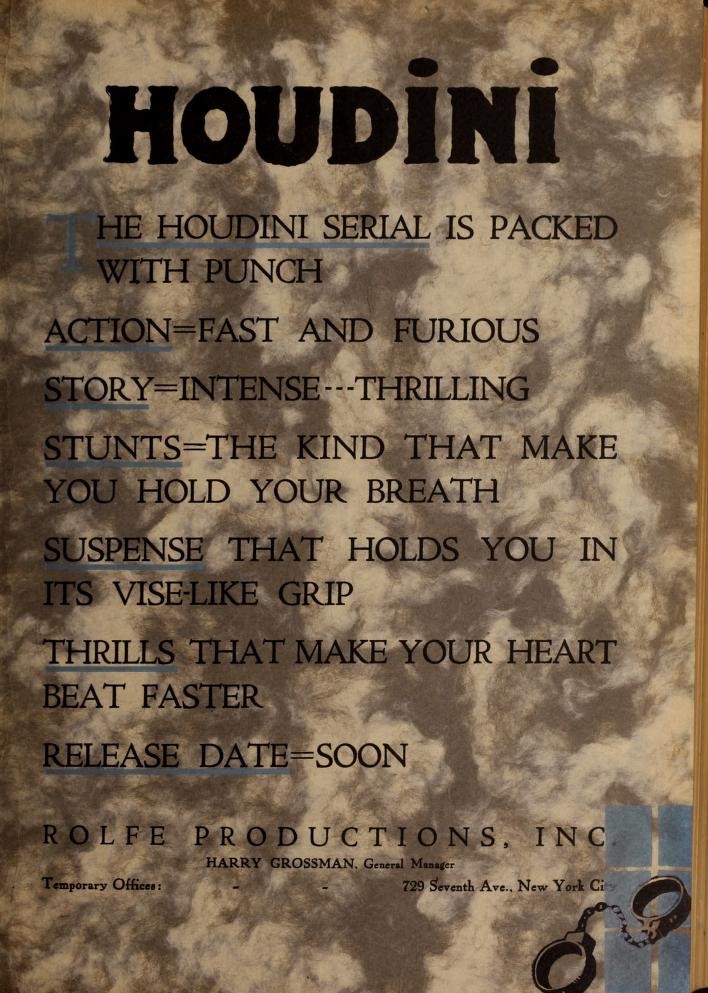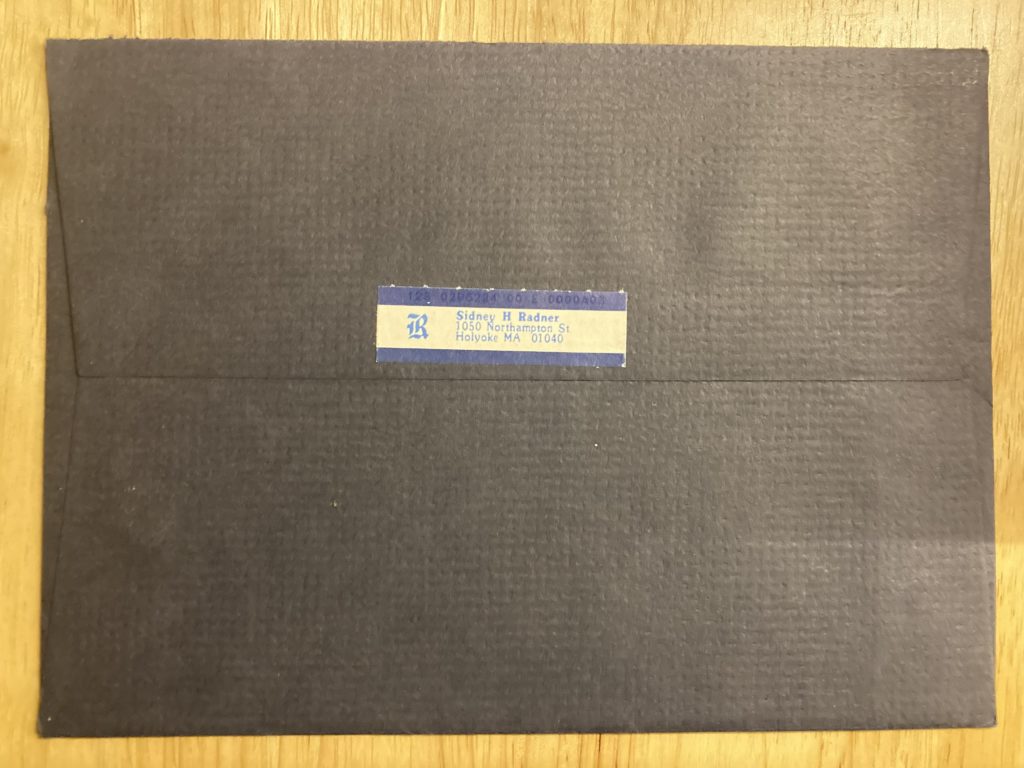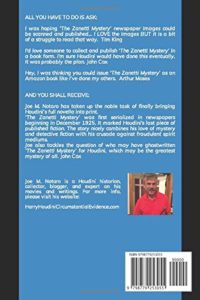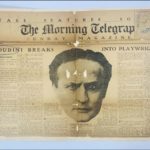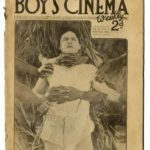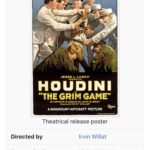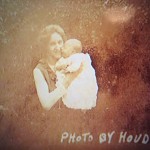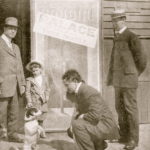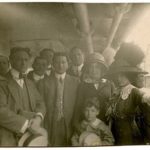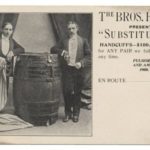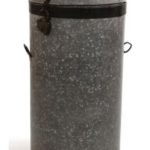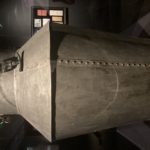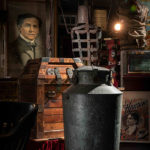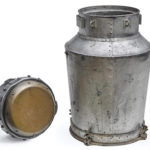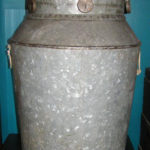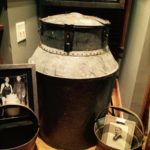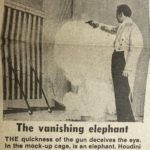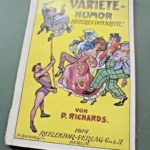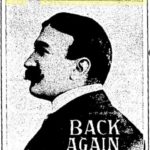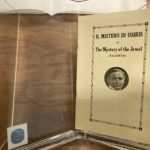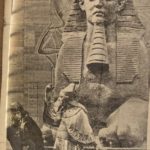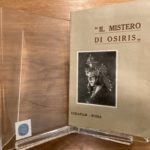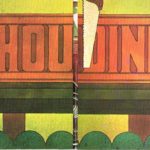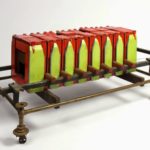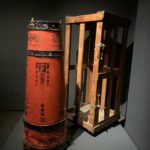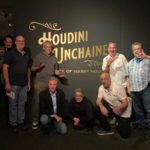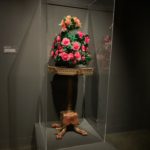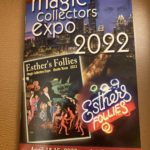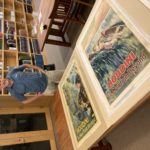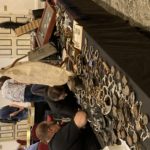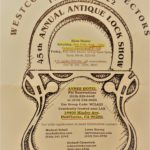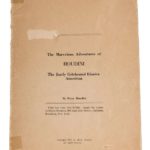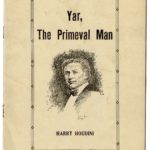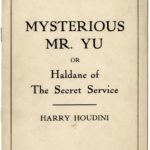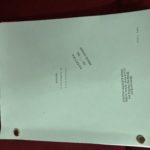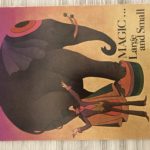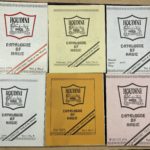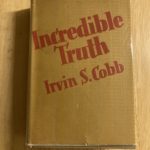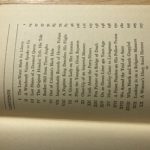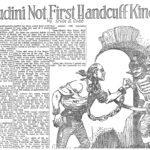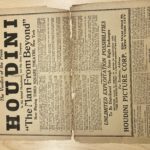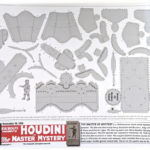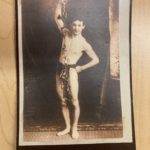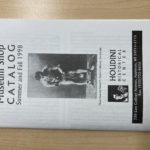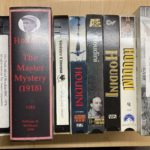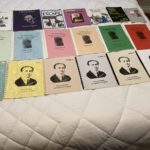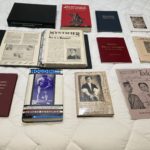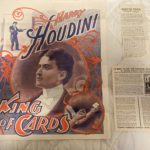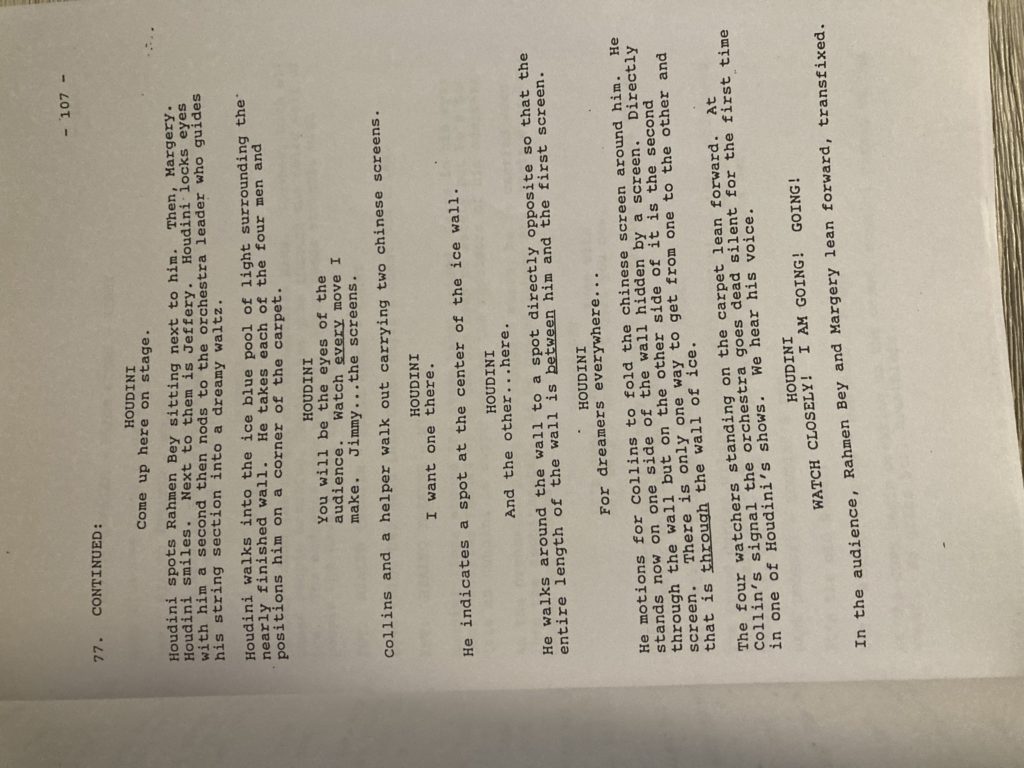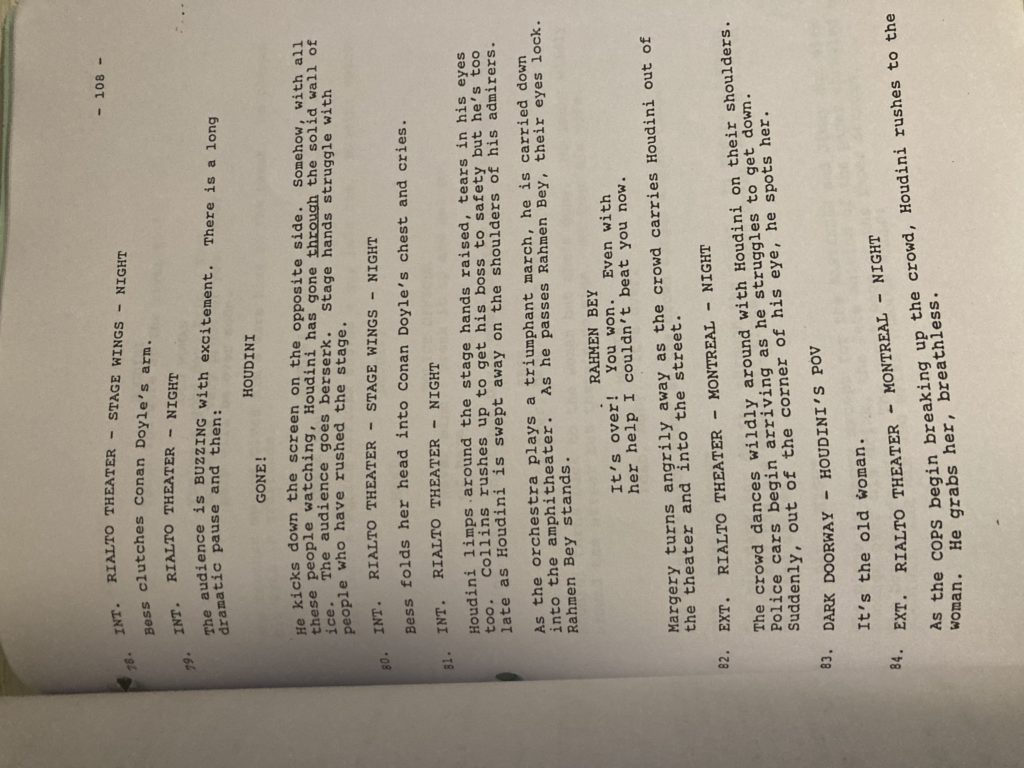Today, I share the following 2 articles that I merged and loosely translated from French to English:
- La Presse newspaper article, “Un Homme enchained se jette dans la Seine” by Jack Iter 8 April 1909 [bold text is from 1909 article]
- Retronews article, “Houdini, le maitre de I’llusion, se jette enchaine dans la Seine” by Pierre Ancery 29/11/2017 [non-bold text is from 2017 article and italized text is from the 1909 article]
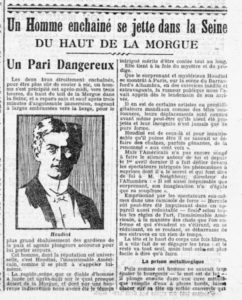
A chained man throws himself into the Seine
FROM THE TOP OF THE MORGUE
A Dangerous Bet
With both arms tightly knotted, to be more sure of sinking, a man rushed this afternoon, around three o’clock, from the top of the roof of the Morgue into the Seine, and reappeared safe and sound after three minutes. of agonizing immersion swimming in large smoldering waves towards the shore, to the great amazement of the peacekeepers and old divers rushing to help him.
This man, whose reputation is universal, is Houdini Elusive American, as he likes to call himself.
The rapid scene that this devil of a man took on this afternoon on the almost deserted quay of the Morgue, and of which by a happy indiscretion we have revealed the intrigued witness deserves to be told at length.
It holds both mystery and wonder.
That the surprising and mysterious Houdini showed himself in Paris, on the stage of Barrasford’s Alhambra, in unprecedented and extravagant exercises, public rumor had taught us the day after his arrival.
It is with certain artists or world conjurers like crowned heads, their movements are known even before they have perhaps been brought to light and their incognito is never more than pure form.
Houdini is one of them and however elusive he may be, he cannot get rid of the sometimes embarrassing chains of fame “with a hundred voices”.
But the American has not yet thought of keeping silence around him and since last April 1st he has paraded before the intrigued spectators the surprise phenomena of which he has the secret and which make Mr. Neighbour, director of ”Alhambra: “He is as inexhaustible as it is surprising, his imagination is matched only by his flexibility”
Imprisoned by the spectators themselves in a straitjacket – Hercules might have been powerless in such a formidable device – tied up according to all the rules of the art, ‘elusive American, like the cats that are locked up and who escape by stretching, shrinking, rolling, get rid of their shackles in no time.
The head and upper body once free, he quickly released his arms; and the rest goes by itself, but all of that is easier said than done.
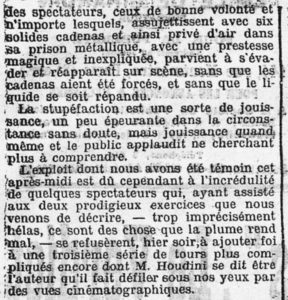
The metal prison
Then, as this man could not impress the bourgeois too much – the dish is his – he then plunges into a metal tank filled with water to the full rim and a solid lid which spectators those of good will and do not no matter which ones, fasten with six strong padlocks and thus deprived of air in its metallic prison, with a magical and unexplained quickness, manages to escape and reappears on stage, without the padlocks having been forced, and without the liquid having spilled.Stupefaction is a kind of enjoyment, a little frightening in the circumstances no doubt, but enjoyment all the same and the public applauds no longer trying to understand.The feat we have witnessed this afternoon is due, however, to the incredulity of some spectators who, having witnessed the two prodigious exercises that we have just described, – too imprecisely alas, these are things that the pen hurts, – refused, last night, to believe a third series of even more complicated tricks of which Mr. Houdini claims to be the author whom he makes pass before our eyes by cinematographic views.
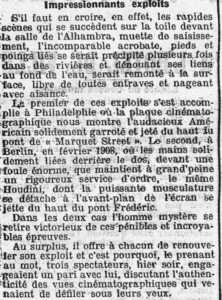
Impressive feats
If we are to believe, in fact, the rapid scenes which follow one another on the canvas in front of the room of the Alhambra, mute with shock, the incomparable acrobat, bound feet and fists, would have rushed several times into rivers and unraveled. Its bonds at the bottom of the water would be raised to the surface free of all obstacles and swimming with ease.The first of these exploits was accomplished in Philadelphia [May 14, 1908] where the cinematographic plate shows us the daring American solidly bound and thrown from the top of the Market Street bridge. The second, in Berlin, in February[September 5] 1908, where his hands are solidly tied behind with his back, in front of an enormous crowd, maintained with great difficulty by a rigorous service of order, the same Houdini, whose powerful musculature stands out in the foreground of the screen, throws himself from the top of the Frederic Bridge.In both cases the mystery man retires victorious from these painful and incredible trials.Moreover, he offers everyone to renew his feat and that is why, taking him at his word, three spectators, last night, made a bet with him, discussing the authenticity of the cinematographic views which had just passed under their will.In 1909, Harry Houdini, the famous illusionist, was in Paris. He stunned the press with a spectacular act performed from the Ile de la Cité.
By 1909, Harry Houdini’s reputation was worldwide. His real name is Ehrich Weisz, the American conjurer, famous for his escape acts, performs from April at the Alhambra in Paris. No doubt to give a little extra publicity to his show, he invites a handful of representatives of the French press to attend a mysterious act that is to take place in broad daylight.
On the day, Jack Iter, journalist at La Presse, is at the meeting place: in front of the Paris Morgue. The building, which Haussmann had built in 1868, is located on the Ile de la Cité, just behind Notre-Dame, and overlooks the Seine. The journalist says:
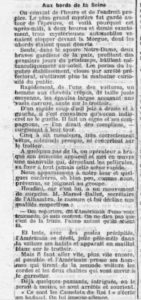
On the banks of the Seine
We agreed on the right time and place. The greatest mystery was kept around the event, and that is why this afternoon, at half past two exactly, three mysterious cars came to stop in front of the Morgue, the surroundings of which were almost deserted.Alone, in the square Notre-Dame, two brave policemen, taking advantage of the first days of spring, yawn melancholy in the sun. The doors of a dismal establishment, closed by decree, no longer attract the unhealthy curiosity of the public.
Quickly, from one of the cars, a man with frizzy hair, just average height, broad shoulders showing a wide build, jumps on the sidewalk. With a quick glance to the right and left, he convinced himself that no prying eyes lurking. He makes a sign and his companions – they look like accomplices – appear in their turn […]. A few steps away, an operator has pointed his huge device and implements a crank that, unrolling the films, will fix forever this fast scene.
We appear in our turn and some colleagues, oh well, like us, warned, join the group.Houdini because it is him, has a movement of surprise. Mr. Marsel Ballut, secretary of the Alhambra reassures him and declines our respective qualities[…]And then, with hasty gestures, the American undresses, throws his clothes into the car and appears in a white jersey on the sidewalk.But, we must go quickly, even faster, if possible, and the American asks his men who are taking the ropes and the two chains from the second car which will be used to bind him.Already a few passers-by, intrigued at least, have stopped and smiled…
Undressing, Houdini then asks the few witnesses – including the journalist – to tie him up.

Houdini hands us the chains and asks us to tie him up securely and according to our pleasure. We are three who apply ourselves to it as best we can, tightening the ropes that enter deep into the flesh of the forearm and make the muscles of the impassive American spring into bulges. The two iron bracelets that enclose the wrists are closed automatically. With a sudden jolt, we make sure that the tying is extremely serious. […]
And supple Houdini climbs the rungs of a folding ladder that has been placed along the wall of the Morgue.Standing on the roof of the Morgue. His shortened silhouette making a stain on the trail of light that floods this old-fashioned corner of Paris, the American looks around him.The crowd which has become denser, risked a few jeers and laughed out loud.Is this the last phase of the carnival!But the two peacekeepers pulled out of their torpor. They now run up and wave the man in the shirt down.Houdini kicks the ladder into the Seine. “He is a mad!” we start shouting from all sides.“Go on then eh! Etienne Dolet!” says, much to everyone’s hilarity, an apprentice who doesn’t want to miss a bite of the show. An agent has detached himself and runs to seek reinforcements to arrest this madman who is playing the statues on the roofs.
The journalist then understands the magician’s audacious project: he will throw himself chained into the Seine from the roof of the Morgue and try to free himself. Houdini sped up a ladder that had been erected against the building and climbed onto the roof. “He’s crazy!” scream onlookers, while a policeman runs to get reinforcements.

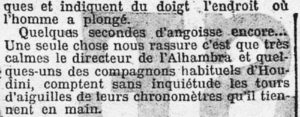
Too late!… Swinging his chained hands and measuring the depth with his eye, the daring American plunges his arms forward and disappears under the wave that a slight turmoil shakes a few moments. Onlookers screamed. Passers-by rush to the bank. In a few minutes the parapets are black with people […]. Anxious, we seek in our turn to pierce the gloomy bottom of the immutable water. A minute must have passed…. longer than an hour and still nothing!
When suddenly…

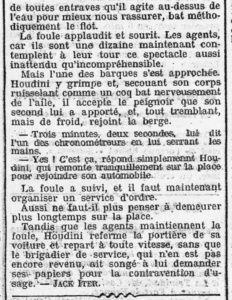
A cry of surprise! and a few meters in the middle of the Seine, a frizzy head emerges! The American won. His arm free of all fetters, which he waves over the water to better reassure us, methodically beats the flow. The crowd applauded and smiled. The agents, because there are a dozen of them now, contemplate in their turn this spectacle as unexpected as it is incomprehensible.
But one of the boats approached. Houdini climbs up there and, shaking his body dripping like a rooster flapping its wing, he accepts the bathrobe that his second has brought him, and, trembling, but cold, reaches the bank. “Three minutes, two seconds,” said one of the timekeepers, shaking his hands. “Yes! That’s it, simply replies Houdini, who quietly goes up the square to reach his car. […]
Houdini closes the door of his car and leaves at full speed, without the serving brigadier, who has not yet returned, having thought of asking him for his papers for the usual ticket.
The series of shows that Houdini will give in Paris, during which he will see him escaping from a straitjacket or a huge can filled with water, will be a triumph (it seems that one of his “tricks” was to insert a master key into the esophagus, a technique learned from a sword swallower encountered at fairs).
Upon his death in 1926, his friend Arthur Conan Doyle, who believed hard as iron in Houdini’s supernatural powers, attended his funeral. The creator of Sherlock Holmes, warning the coffin, would have had these words: “I bet he is no longer there…”

